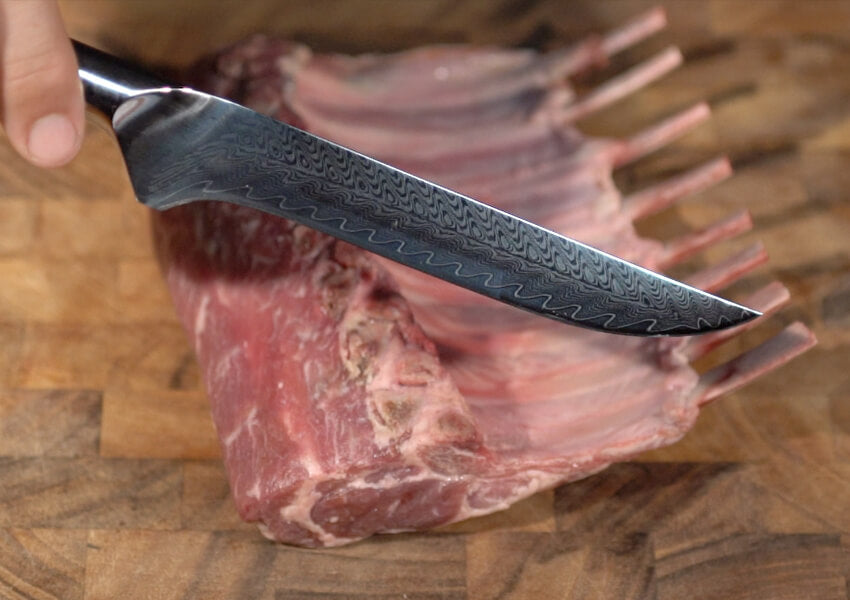In the world of culinary arts, selecting the right tools can greatly influence your cooking experience. Two common choices that often spark debate among kitchen enthusiasts are the boning knife vs cleaver. These tools, while both indispensable, serve different purposes and offer unique benefits. Understanding their differences can help you make an informed decision that aligns with your cooking needs.

Understanding the Basics of Boning Knives
A boning knife is a specialized tool designed to easily separate meat from bones. Its distinctive features include a narrow, flexible blade that allows for precise cuts. This makes it ideal for tasks like filleting fish or trimming fat from meat. The design of a boning knife is tailored to navigate around bones, ensuring maximum yield from your cuts.
Advantages of Boning Knives
One of the primary advantages of a boning knife is its precision. The flexibility of the blade allows it to follow the contours of bones closely, reducing waste. Additionally, the sharpness of the blade ensures clean cuts, which is essential for maintaining the texture of the meat. If you’re interested in learning more about boning knife grip styles, this guide provides detailed insights.
Exploring the Role of Cleavers
In contrast, a cleaver is a robust tool characterized by its thick, heavy blade. It is designed to handle tough tasks like chopping through bones and thick cuts of meat. Cleavers are typically larger and heavier, providing the necessary force to break down carcasses and separate joints.
When to Use a Cleaver
The strength of a cleaver lies in its ability to handle heavy-duty tasks. Whether you’re preparing a large roast or breaking down poultry, a cleaver can efficiently tackle these challenges. Its weight and size make it less suitable for delicate tasks, but it excels in situations requiring brute force.
Comparing the Two: Boning Knife vs Cleaver
When deciding between a boning knife vs cleaver, consider the nature of your cooking tasks. If precision and flexibility are paramount, the boning knife is your go-to option. However, if you’re frequently dealing with large cuts or bones, the cleaver is indispensable. Each tool complements the other, and many professional chefs keep both in their arsenal.
Versatility in the Kitchen
Combining the use of a boning knife and a cleaver can enhance your culinary capabilities. The boning knife can handle intricate tasks, while the cleaver takes care of the heavy lifting. This balance allows for a more versatile and efficient kitchen experience.
Choosing the Right Tool for Your Needs
Ultimately, the choice between a boning knife vs cleaver depends on your specific needs. Consider the types of meals you frequently prepare and the tasks you need to accomplish. If you’re unsure, starting with a boning knife for deer or similar tasks can help you explore its versatility.
Maintenance and Care
Proper maintenance is crucial for both tools. Regular sharpening and appropriate storage will ensure their longevity and performance. For more tips on maintaining your knives, refer to our professional boning knife tips.
Conclusion: Finding Your Perfect Fit
In conclusion, both the boning knife and the cleaver have their place in the kitchen. Understanding their unique features and applications enables you to make a choice that best suits your cooking style. By investing in the right tools, you can enhance your culinary skills and make meal preparation an enjoyable experience.

FAQs
What is the main difference between a boning knife and a cleaver?
The main difference lies in their design and intended use. A boning knife is designed for precision tasks like filleting, while a cleaver is built for heavy-duty chopping through bones.
Can I use a boning knife for tasks meant for a cleaver?
While a boning knife is versatile, it is not suitable for tasks requiring significant force, such as chopping through bones. For such tasks, a cleaver is more appropriate.
How do I maintain my boning knife and cleaver?
Regular sharpening and proper storage are key to maintaining both tools. Ensure they are cleaned and dried after each use to prevent rust and damage. For more detailed maintenance tips, check out this guide.
This article contains affiliate links. We may earn a commission at no extra cost to you.


